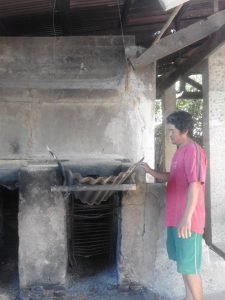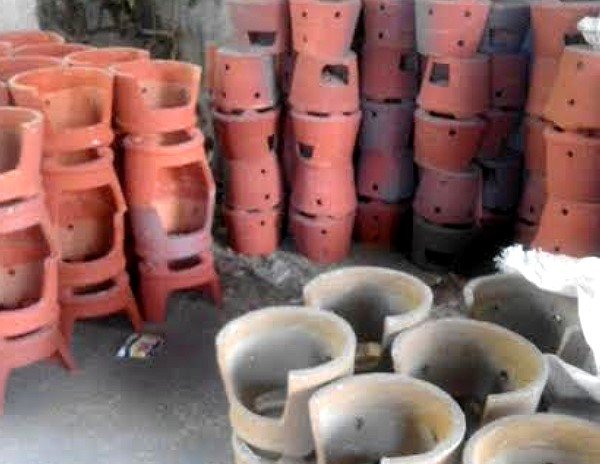It was the topic of salt that brought me to Pulupandan and unearthed another industry – from the salt of the earth to the earth itself. Here’s Earth calling the potters of Brgy. Utod.
One of the potters who showed me around was the very helpful Kagawad Roy Veraguas. He is a salt producer for five months of the year or so, and a potter the whole year through. As he sits in the shade by the vast salt beds, he talks about the pottery industry of Brgy. Utod. Kagawad Roy, 39, is a good source of information on both industries and so is his 86-year-old aunt who remembers the batils that would dock nearby and carry off to Miag-ao cooking pots and banga (traditional water jars).

There are more than 20 potters in the barangay and they use clay from the “talamnan sang humay” to fashion flower pots, charcoal and wood stoves, cooking pots, banga, and even bricks. They used to make a lot of bricks to fill the order of one prominent customer for her residence. Now, the market has shrunk considerably.

Kagawad takes me to the community kiln. This brick oven is around 35 years old and its dark, cavernous interior could hold 3,000 bricks to be fired in a 24-hour period. The bricks that make up the kiln have “Sison” stamped on one side. These are said to be manufactured in Negros Oriental. This means that making bricks is a recent activity in this centuries-old Pulupandan industry.

The kiln already shows signs of disintegration – some brick parts around the vents have fallen off and Kagawad said that the structural damage is quite serious. The roof of the shed that houses the kiln also needs replacement especially since the rainy season will soon be here. Regardless of these flaws, the oven is an interesting piece to explore with its tall and straight chimney, the flue, the vents through which rice hull is dropped into to keep the fire burning.
Just nearby, piles of double-purpose terra-cotta stoves are waiting to be sold. Beside these are the pale unfired ones. Each comes with a collar that fits around the upper part to form a guard to keep charcoal from falling out. Without the guard, the stove can be used with wood. What a clever device!
The highlight of the visit was meeting one of the four remaining ladies who do the pini-pian where pottery, especially the kulon, is shaped by the continuous patting of a wooden paddle on a cooking pot’s base to give it its rounded contours. 78-year-old Tia Aida, who learned the craft from her forebears, willingly showed me how she does the pini-pian. It was strange but the first thing she did was disappear into her house and emerge with a pink faded patadyong. “I cannot work without it,” she explained. She grabs a very low miniature bench and two paddles and places them near her as she settles beside an old wooden potter’s wheel. Then, actual work begins.

First, she takes a sizeable amount of clay, kneads it, and gives it shape on the wheel. After forming the hollow and the lip or rim, she sits on the ground, tucks her left leg under her straight right leg. The mini-bench is placed underneath her left thigh. This gives her a comfortable position to cradle the kulon on her lap. And the patadyong acts as a cushion for the pot. So, that’s why!
Tia Aida refines the kulon’s base further by taking a smooth rounded piece of stone that fits in her palm, and inserts this inside the hollow. This acts as a moveable mold as she pats the exterior base with one of the small paddles. One hand holds the stone, the other the paddle, and both coordinate in a dance that gives the kulon its beautifully-curved bottom. The pot is thinner, more compact, and lighter from the compression the pini-pian gives. It is difficult to do. Tia Aida’s daughter admits this and said that she herself has not reached this level of competence. She laments that the next generation in her clan is no longer interested in the craft as they have gotten better education and found better-paying work elsewhere.
It truly takes a long time to be a master. Patience is our friend though many modern folks do not see it this way. Impatience had made many abandon handicrafts because it takes time to do these, and do so with excellence. Machines also make people forget very old skills, and with fewer artisans, some industries might disappear and artisanal goods become rarer and more expensive.

